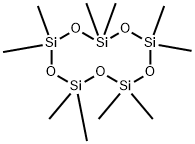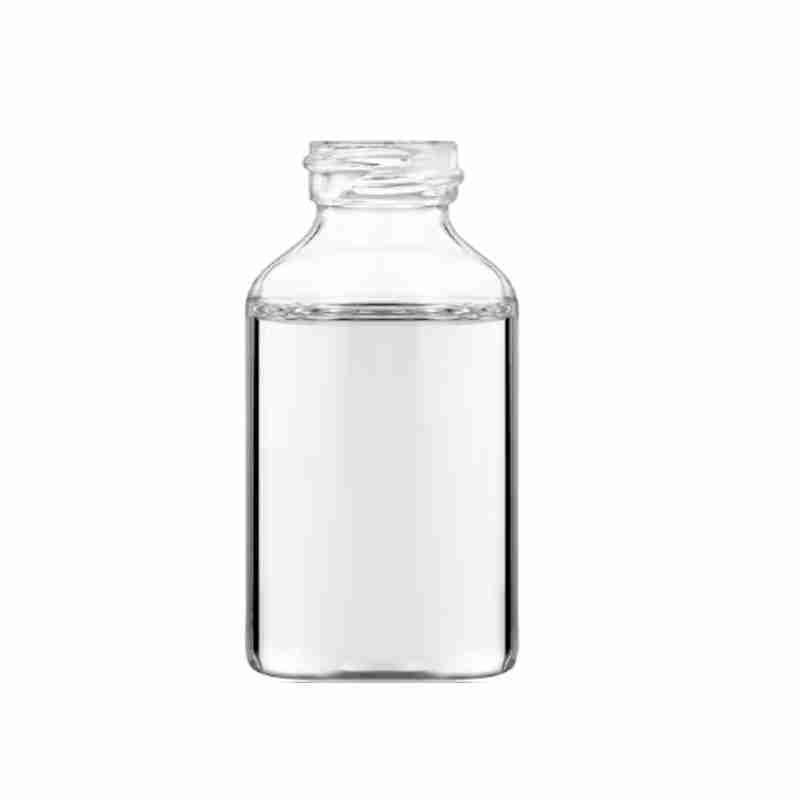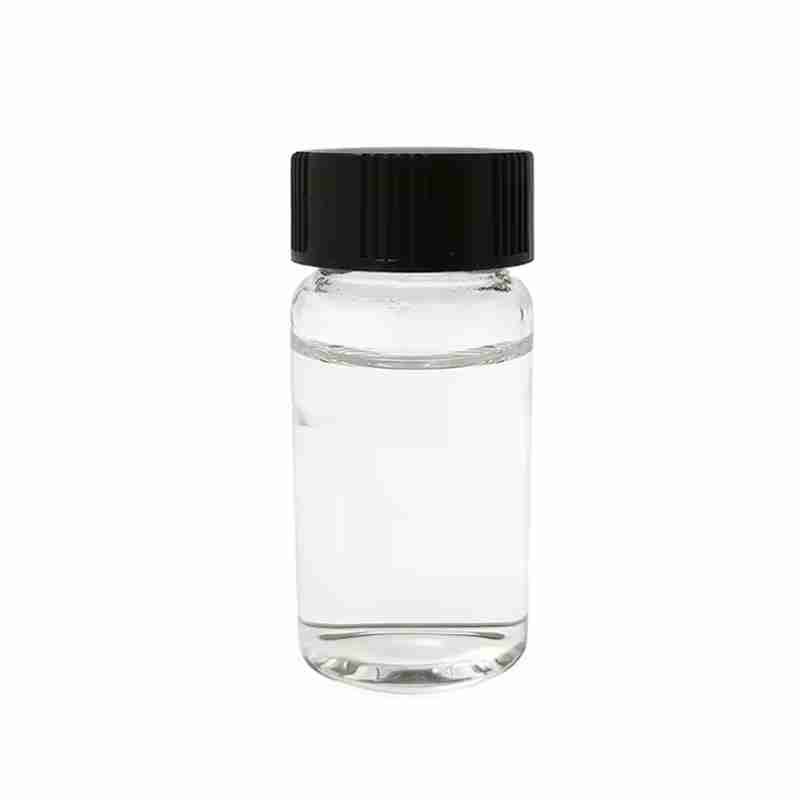Decamethylcyclopentasiloxane CAS #541-02-6
Decamethylcyclopentasiloxane (D 5) is a silicone compound with the molecular formula of [(CH 3) 2SiO] 5. It is a colorless and tasteless liquid with slight volatility.
Cyclopentasiloxane CAS No. 541-02-6, chemical formula C10H30O5Si5, molecular weight 370.77000, Chinese alias decamethylcyclopentasiloxane, liquid, boiling point 90 ??C10 mm Hg(lit.), flash point 162 ??F, density 0.958 g/mL at 25 ??C(lit.), refractive index n20/D 1.396(lit.). Decamethylcyclopentasiloxane (cyclopentasiloxane) is a colorless, odorless, volatile liquid cyclic siloxane, safe and environmentally friendly, and has been widely used in health and beauty products , such as deodorants, antiperspirants, cosmetics, shampoos, body lotions, etc. Good compatibility with alcohol and most other cosmetic solvents.
发送询盘
Decamethylcyclopentasiloxane CAS #541-02-6
| Decamethylcyclopentasiloxane Basic information |
| Product Name: | Decamethylcyclopentasiloxane |
| Synonyms: | CD3770;cyclicdimethylsiloxanepentamer;D3770;siliconsf1202;vs7158;CYCLIC PENTAMER-D5;DECAMETHYLCYCLOPENTASILOXANE;Decamethylcyclopentasiloxane (cyclic monomer)Cyclic Pentamer-D5 |
| CAS: | 541-02-6 |
| MF: | C10H30O5Si5 |
| MW: | 370.77 |
| EINECS: | 208-764-9 |
| Product Categories: | Organometallic Reagents;Organosilicon;Si (Classes of Silicon Compounds);Si-O Compounds;Heterocycles;Intermediates & Fine Chemicals;Pharmaceuticals;Organics;Silicone Series;Siloxanes;541-02-6 |
| Mol File: | 541-02-6.mol |
 |
|
| Decamethylcyclopentasiloxane Chemical Properties |
| Melting point | -44??C |
| Boiling point | 90 ??C/10 mmHg (lit.) |
| density | 0.958 g/mL at 25 ??C (lit.) |
| vapor pressure | 33.2Pa at 25?? |
| refractive index | n20/D?1.396(lit.) |
| Fp | 162???F |
| storage temp. | 2-8??C |
| solubility | <0.0001g/l (calculated) |
| form | Liquid |
| color | Colorless |
| Specific Gravity | 0.959 |
| explosive limit | 0.52-7%(V) |
| Water Solubility | Immiscible with water. |
| Hydrolytic Sensitivity | 1: no significant reaction with aqueous systems |
| Merck | 14,2848 |
| BRN | 1800166 |
| Dielectric constant | 2.5??20?棩 |
| Stability: | Stable. Incompatible with strong oxidizing agents. |
| InChIKey | XMSXQFUHVRWGNA-UHFFFAOYSA-N |
| LogP | 8.07 at 24.6?? |
| CAS DataBase Reference | 541-02-6(CAS DataBase Reference) |
| NIST Chemistry Reference | Decamethylcyclopentasiloxane(541-02-6) |
| EPA Substance Registry System | Decamethylcyclopentasiloxane (541-02-6) |
- 2
- 2-diallylpent-4-en-1-amine
- 4
- 95-16-9
- Ammonium sulfamate
- Benzothiazole
- cas:67889-00-3ح2
- cas:83524-75-8 | pigment black 32
- cas:928836-00-4 | 2
- cas:932745-70-5 | 4
- Chemical Minerals
- Coconut diethanolamide
- Daily Chemicals
- discount
- for sale
- General pvc resin
- hexyl D-glucoside
- in stock
- Lauramidopropyl betaine
- LAURIC ACID MONOETHANOLAMIDE
- Petroleum Additives
- Plasticiser
- Ploymers
- price
- PVC
- quotation
- Raw Materal
- Remove term: Petroleum Additives Petroleum Additive
- SODIUM ETHYL 2-SULFOLAURATE
Related Products
Common English name: 5-iodo-2,3-dihydropyridazin-3-one
CAS No.: 825633-94-1
Molecular formula: C4H3IN2O
Molecular weight: 221.98
Sample: Available
Octocrylene is an organic compound widely recognized for its potent UV-filtering properties, making it an essential ingredient in sunscreens and other skincare products designed to protect the skin from harmful ultraviolet radiation. With the chemical name 2-(4-Methylbenzyl)-2H-benzotriazole-5-methyl, octocrylene is a stable and photostable molecule that provides broad-spectrum protection against both UVA and UVB rays.
This oil-soluble chemical is valued for its ability to absorb UV radiation effectively, converting it into heat without causing skin irritation or staining clothes. Octocrylene is often used in combination with other UV filters to enhance the sun protection factor (SPF) of formulations, ensuring a balanced and comprehensive defense against sun damage.
As a lipophilic compound, octocrylene is compatible with various cosmetic and dermatological formulations, contributing to the development of lightweight, non-greasy sunscreens. Its chemical structure allows for a high degree of safety and efficacy, making it suitable for a wide range of skin types, including sensitive skin.
In summary, octocrylene is a reliable and efficient UV filter, pivotal in the formulation of modern sunscreens that offer advanced protection against the sun’s harmful effects while maintaining skin comfort and product aesthetics.
Chemical Name: Potassium Castorate
CAS No.: 8013-05-6
Molecular Formula: C57H107K3O12
Molecular Weight: 1101.74718
Appearance: Yellow Liquid
Silicones are a family of synthetic polymers known for their versatility and stability. They are heat-resistant, non-toxic, and have excellent electrical insulation properties. Commonly used in various industries such as construction, automotive, aerospace, and personal care products, silicones offer a wide range of applications from sealants and adhesives to lubricants and medical devices. Their resistance to extreme temperatures and weathering makes them a preferred choice for many high-performance applications.
Butylated Hydroxytoluene (BHT) is a synthetic phenolic antioxidant commonly added to foods, cosmetics, and packaging to prevent the oxidation of fats and oils, thereby extending their shelf life. It is also used as a preservative in a variety of products, including rubber, petroleum products, and animal feed. BHT is recognized for its effectiveness in maintaining nutrient levels, color, flavor, and odor in food products . It is known to have a melting point of 69-71??C, a boiling point of 265??C, and is soluble in ethanol, acetone, and benzene, but not in water, glycerin, or propylene glycol . BHT is also used in some dietary supplements due to its antioxidant properties . However, it is important to handle BHT with care, as it can cause skin irritation and is considered harmful if swallowed .
Chemical Name: Zinc citrate
Synonyms: Zinc citrate trihydrate
CAS No.: 546-46-3
Molecular Formula: C6H8O7Zn
Molecular Weight: 257.5
Appearance: White powder
Product name:HYDROXYPROPYL GUAR HYDROXYPROPYLTRIMONIUM CHLORIDE
Purity:99%
Appearance:Light Yellow Powder
Package:Customized according to customer needs.
Sample:Available
Polyhexamethylene guanidine hydrochloride, often abbreviated as PHMG-HCl, is a high molecular weight polymeric biguanide compound known for its potent antimicrobial properties. With a chemical structure that features a long chain of methylene groups bridged by guanidine units, PHMG-HCl is effective against a broad spectrum of microorganisms, including bacteria, viruses, and fungi.
This hydrochloride salt form of PHMG is highly soluble in water and is commonly used in various applications due to its non-irritant and non-toxic nature to human skin and mucous membranes. It is widely recognized for its ability to form a colorless and odorless solution, making it an ideal choice for use in personal care products, medical disinfectants, and water treatment processes.
The versatility of PHMG-HCl lies in its cationic nature, which allows it to bind to negatively charged microbial cell walls, disrupting their integrity and leading to cell death. This mechanism of action contributes to its effectiveness as a preservative and disinfectant. Moreover, its substantivity, or the ability to adhere to surfaces, enhances its long-lasting antimicrobial activity.
In summary, Polyhexamethylene guanidine hydrochloride is a reliable and efficient antimicrobial agent, pivotal in industries where hygiene and cleanliness are paramount, offering a safe and sustainable solution for microbial control.
3,4-Ethylenedioxythiophene is a synthetic organic compound characterized by its unique structure that includes a thiophene ring with ethylenedioxy substituents at the 3 and 4 positions. This compound is known for its potential applications in the synthesis of various organic materials, including pharmaceuticals and organic electronic devices such as sensors and solar cells. Its stability and reactivity make it a versatile intermediate in the chemical industry.
Ethylhexyl Palmitate is a skin-conditioning ester, derived from ethylhexanol and palmitic acid, that imparts moisturization and a smooth texture to cosmetic and personal care formulations. It is valued for its emollient properties, enhancing the sensory experience of skin care products.
Benzothiazoles are a class of chemical compounds characterized by a fused benzene and thiazole ring. They exhibit a broad spectrum of applications, particularly as antioxidants in rubber and plastic industries, enhancing product longevity and performance. Additionally, benzothiazoles serve as key intermediates in the synthesis of pharmaceuticals, contributing to the development of life-saving drugs. Recognized for their stability and reactivity, these compounds are integral to advancing material science and healthcare solutions.
Chemical Name: Ashwagandha Extract
Synonyms: Withania somnifera, ext.; Withania Somnefera Extract
CAS: 90147-43-6
Appearance: Brown


















